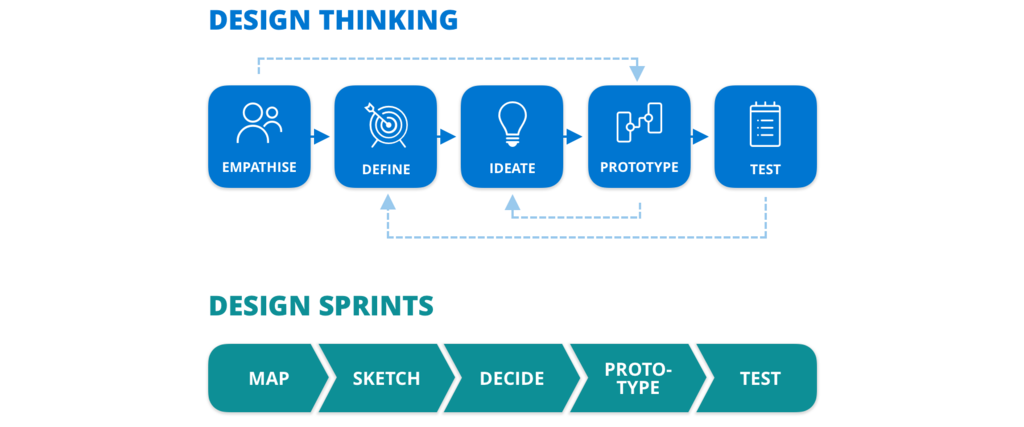
Industry tools and frameworks defined
When designing any application, it is critical to understand the business cases and the perspective of the people that interact with it. Designers use industry-standard tools and frameworks to distill business and user needs, maintain quality and accuracy, and create value fast.
In the module, Determination of user and business needs, you explore several suggested design methodologies to help you decide on a design direction for your Pega Platform™ application. Your team or organization may also have additional guidelines or requirements.
Design thinking and design sprints are two industry best practices recommended by Pega. Both rely on each other to create a real sense of empathy and action in your working group.
Design thinking and design sprints at Pega
Design thinking and design sprints are proven approaches that help teams work together to solve problems and deliver value with new and innovative solutions. These techniques have been around for many years and have spread widely throughout the business world. The methodologies that Pega practices and recommends leverage design thinking and design sprints.
Design thinking is the broader term to cover the overall philosophy and approach to problem-solving and innovation through user-centricity, empathy, exploration, and iteration.
Tim Brown, IDEO
“Design thinking is a human-centered approach to innovation that draws from a designer’s toolkit to integrate the needs of people, the possibilities of technology, and the requirements for business success.”
A design sprint refers to a prescriptive and timeboxed method of applying design thinking with a team. In practice, this process takes the form of specific sequenced and timeboxed activities that begin with understanding and empathizing and builds to prototyping a solution and testing with real users. Design sprints often take place over a week in a series of workshops with stakeholders.
Key benefits of design thinking and design sprint
Design thinking and design sprints offer key benefits for the whole team.
In the following image, click the + icons to learn more about the benefits.
Typical design sprint at Pega
A typical design sprint at Pega includes:
- Understanding user and business needs.
- Mapping the user flows.
- Ideating on the design direction.
- Crafting a test or prototype.
- Reviewing with actual or expected users.
The content of the module Determination of user and business needs covers only steps 1-3 of a typical Pega design sprint. Teams may use the more traditional 5-day flow or a longer 10-day flow, depending on the scope of the project.
Check your knowledge with the following interaction.
This Topic is available in the following Modules:
If you are having problems with your training, please review the Pega Academy Support FAQs.
Want to help us improve this content?
